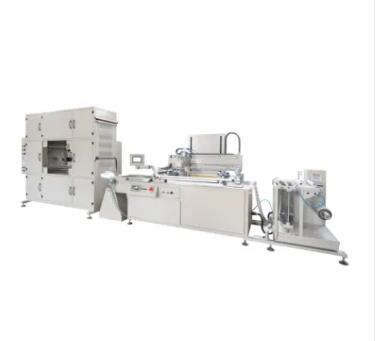Exploring the Colors of Innovation: Digital Printing vs. Traditional Printing
2023-11-29
Introduction:
In the dynamic world of printing, two titans stand tall—Digital Printing and Traditional Printing Methods. Each method has its unique strengths, catering to diverse needs and preferences in the ever-evolving landscape of design and communication. In this blog, we embark on a journey to unravel the distinctions between these printing giants and understand how digital printing differs from traditional printing methods.
The Essence of Traditional Printing:
Traditional printing methods, such as offset and letterpress, have been the backbone of the printing industry for decades. These techniques involve transferring ink from a printing plate or block onto a printing surface, which is then pressed onto the final material, typically paper. The process is meticulous, with each color requiring a separate plate, making it ideal for high-volume printing.
1. Plate-Based Printing:
- Traditional methods rely on physical plates, each representing a color, for printing. These plates are etched or engraved with the image to be printed.
2. High Setup Costs:
- The initial setup costs for traditional printing can be substantial due to the creation of plates and specialized equipment.
3. Ideal for Large Print Runs:
- Traditional printing is highly efficient for large quantities, making it a cost-effective choice for mass production.
The Rise of Digital Printing:
Digital printing, on the other hand, represents a paradigm shift in the industry. It involves directly transferring digital files onto various substrates, eliminating the need for plates and allowing for greater flexibility in small to medium print runs.
1. No Plates, No Hassle:
- Digital printing is plateless, streamlining the printing process and reducing setup time. This makes it a more accessible option for short print runs.
2. Variable Data Printing:
- Digital printing excels in variable data printing, allowing for personalized content in each print, opening the door to targeted marketing and individual customization.
3. Cost-Effective for Small Runs:
- While traditional methods thrive in large-scale projects, digital printing shines in scenarios where cost-effectiveness and quick turnaround times for smaller quantities are crucial.
The Color Palette Showdown:
1. Color Consistency:
- Traditional printing methods often require manual adjustments to maintain color consistency across large print runs. Digital printing, with its advanced color management systems, offers more precise control over color reproduction.
2. Spot vs. Process Colors:
- Traditional printing primarily uses spot colors, while digital printing employs a four-color process (CMYK) for a broader spectrum. This can impact the range and vibrancy of colors achievable in each method.
Environmental Footprint:
1. Waste Reduction:
- Digital printing tends to produce less waste compared to traditional methods, as it doesn't require the creation of plates and allows for on-demand printing.
2. Chemical Usage:
- Traditional printing methods involve the use of chemicals in the plate-making process, contributing to environmental concerns. Digital printing minimizes such chemical usage.
Conclusion:
In the clash between tradition and innovation, both digital printing and traditional printing methods play pivotal roles in the diverse realm of graphic arts. While traditional printing methods uphold their reign in high-volume production, digital printing emerges as the hero of versatility, offering cost-effective solutions for short print runs with unparalleled customization. The choice between these printing titans ultimately hinges on the specific needs, scale, and desired outcomes of each unique printing project. As technology continues to advance, these two methods will likely find new ways to complement each other, providing a vibrant spectrum of options for the creative minds shaping our visual world.



